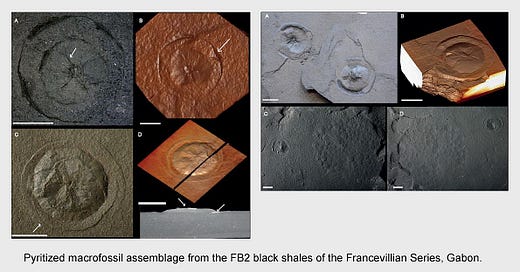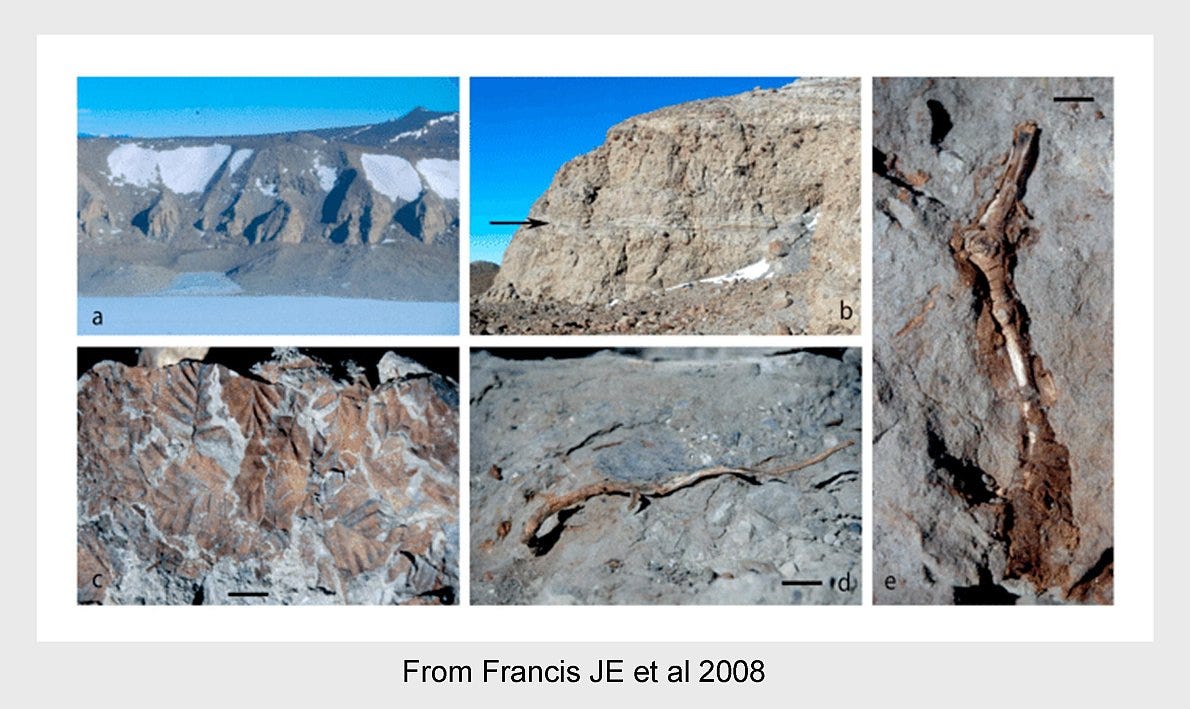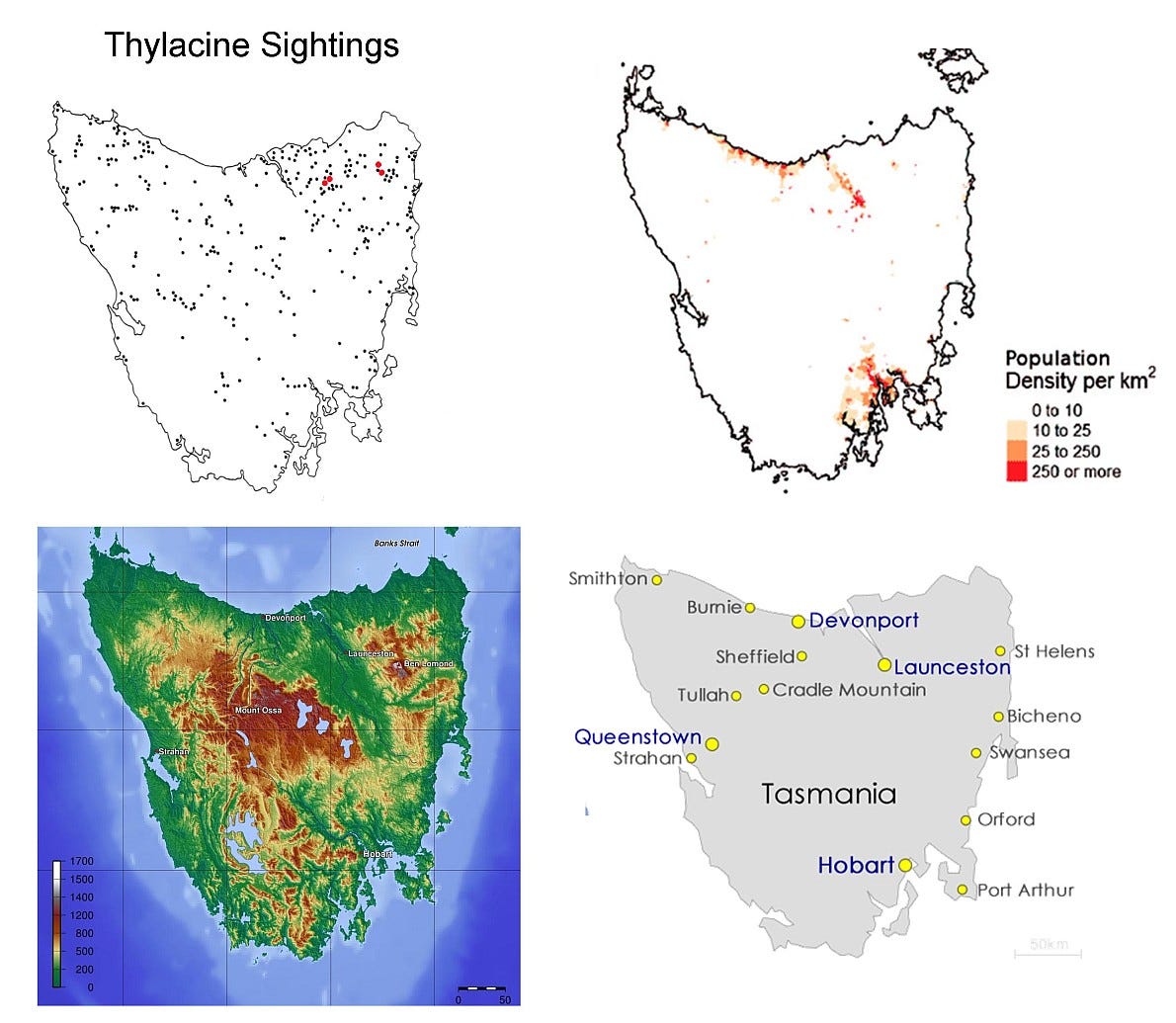Over the past two weeks, I have been working on about three brand new posts about various contemporary topics such as the transformation of modern video gaming into glorified gambling, how being born after the very early 1970s has a strong correlation with poor life and career outcomes in the West and an overview of major hype cycles in Technology which have failed over past two decades. However between unexpected work commitments and a respiratory condition which lasted for about a week, I have not been able to finish them. Having said that, in the future I will aim for one new post every 7-10 days. So for the time being, I am going to list a series to some of my older posts about one of my many interests- paleontology. Some of you might not know this, but my oldest posts when I started this Substack were about this topic.
So here is a short list of some of my older posts on the mysteries and unanswered questions in paleontology. Note that these are summaries and the full posts can be found by clicking on the links.
1] Multicellular Life Likely Arose More than Once and is Far Older than We Think
This article explores evidence that multicellular life likely evolved much earlier than the commonly accepted scientific timeline, potentially over 2 billion years ago, challenging the notion that it first appeared around the Cambrian period (541 million years ago). While the conventional viewpoint states that unicellular life on Earth began over 3.5 billion years ago with single-celled organisms like bacteria, there is evidence for bacteria-like microfossils from 4 billion years ago in the Hadean eon. For the first 2 billion years, life remained unicellular due to extremely low atmospheric oxygen levels (<0.1%), which were insufficient to support the energy demands of multicellular organisms. The Great Oxygenation Event, which began 2.5–2.4 billion years ago, marked a rise in oxygen levels above 1%, driven by oxygen-producing cyanobacteria, which reacted with atmospheric methane and terrestrial elements until these sinks were saturated. This oxygen increase triggered a 300-million-year period of global glaciation, linked to reduced methane (a potent greenhouse gas) and a dimmer sun, profoundly impacting Earth’s climate and microbial life.
The rise in oxygen however also enabled aerobic respiration, essential for multicellular life, as it provided the energy needed for cellular differentiation, a defining feature of eukaryotes with endosymbiotic mitochondria, which emerged around 2 billion years ago. While the scientific consensus long held that multicellular life began in the Cambrian, discoveries like the Ediacaran Charnia fossils confirmed its existence in the pre-Cambrian Ediacaran period (635–541 million years ago). Now even earlier fossil evidence, such as 2.1-billion-year-old fossils from the Francevillian formation in Gabon, suggests multicellular life emerged shortly after the Huronian glaciation, when oxygen levels reached 1–2%. These Francevillian biota, though simple and lacking complex systems like circulation or digestion, indicate that multicellularity evolved multiple times, possibly as early as 2.1 billion years ago. This article argues that such findings, along with other previously known trace fossils from 1.5–1 billion years ago, challenge the established scientific consensus, emphasizing that theories must adapt to new evidence rather than dismissing it.
2] Antarctica was Much Warmer as Recently as 2.6 Million Years Ago
The article presents paleontological evidence from Antarctica that challenges claims about anthropogenic climate change, particularly the notion that human-induced greenhouse gas emissions will cause unprecedented polar ice melt and sea level rise. The post highlights that Antarctica was significantly warmer and less glaciated as recently as 2.6–2.3 million years ago during the late Pliocene, despite atmospheric CO2 levels being equal to or lower than today’s. This evidence centers on fossilized southern beech trees and other vegetation found at Oliver Bluffs, near the Beardmore Glacier in the Transantarctic Mountains, located just 500 km from the South Pole at 85 degrees South. These fossils, dated to the Pliocene (5.3–2.6 million years ago), indicate that the region supported forests at a time when it was about 30 degrees Celsius warmer than today, resembling climates of Northern Canada or Alaska, and suggest that Antarctica’s ice sheets were much smaller and thinner than they are now.
The presence of these fossils, first noted in the late 1980s and possibly observed by Robert Scott’s expedition in the 1910s, raises questions about how such vegetation thrived so far south and how seeds for these forests persisted through cycles of glaciation and reforestation. The article suggests that local, permanent forests likely existed in coastal regions north of 70–75 degrees South, implying minimal ice coverage in those areas. Supporting evidence includes fossilized nothofagous pollen found in Pliocene marine sediments over 1,000 km away, dated between 5 and 2.2 million years ago. The author argues that these findings undermine narratives of catastrophic climate change, as they demonstrate that Antarctica experienced warm, forested conditions under CO2 levels comparable to or lower than today’s, suggesting natural climate variability rather than human activity as a primary driver of such conditions.
3] The Thylacine aka Tasmanian Tiger is Probably Still Around in Tasmania
The Thylacine, or Tasmanian Tiger, is a marsupial resembling a small wolf or coyote, once widespread across Australia, New Guinea, and Tasmania, but believed to have been hunted to extinction in Tasmania by the 1930s due to colonial farmers viewing it as a pest. Despite its official extinction in 1936, credible sightings in 1938, 1957, and 1961, along with ongoing reports, suggest it may still survive in remote areas. The post explains that marsupials, like the Thylacine, thrived in Australia after the breakup of Gondwana, filling ecological niches similar to placental mammals elsewhere, until competition (e.g., from dingoes) and human activity reduced their numbers.
Tasmania’s sparse population, with over 70% of its 530,000–540,000 residents concentrated in five urban areas, leaves vast, wild regions, including 20% of the island as a national park, ideal for a reclusive species like the Thylacine to persist unnoticed. Post-1961 sightings, particularly in Tasmania’s remote, hilly, and forested areas, support the possibility of surviving populations. The post also notes occasional mainland sightings in South-West Australia, though the case for survival is stronger in Tasmania due to its geography and clustering of sightings in specific remote regions, suggesting small, isolated Thylacine populations may still exist.
What do you think? Comments?






